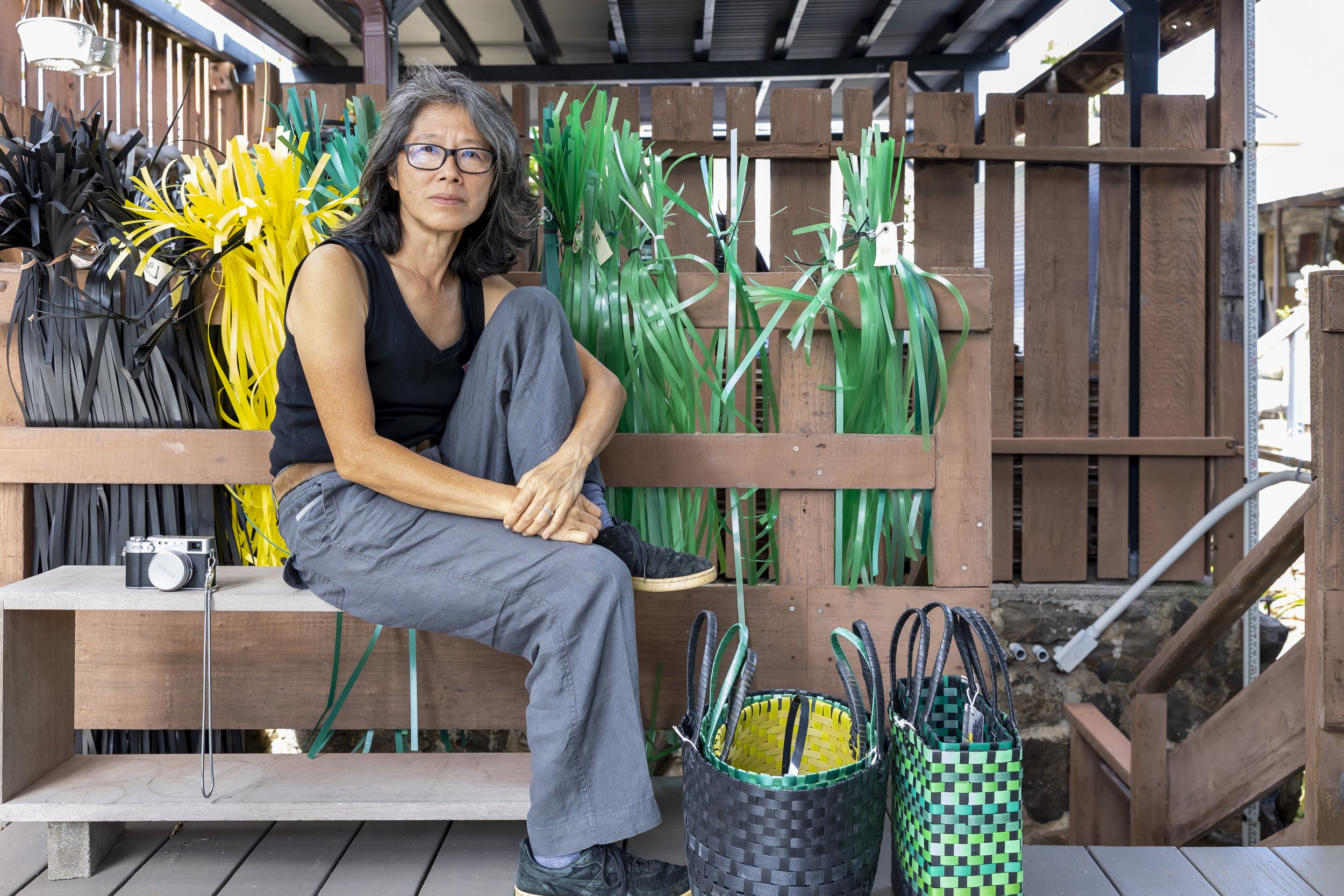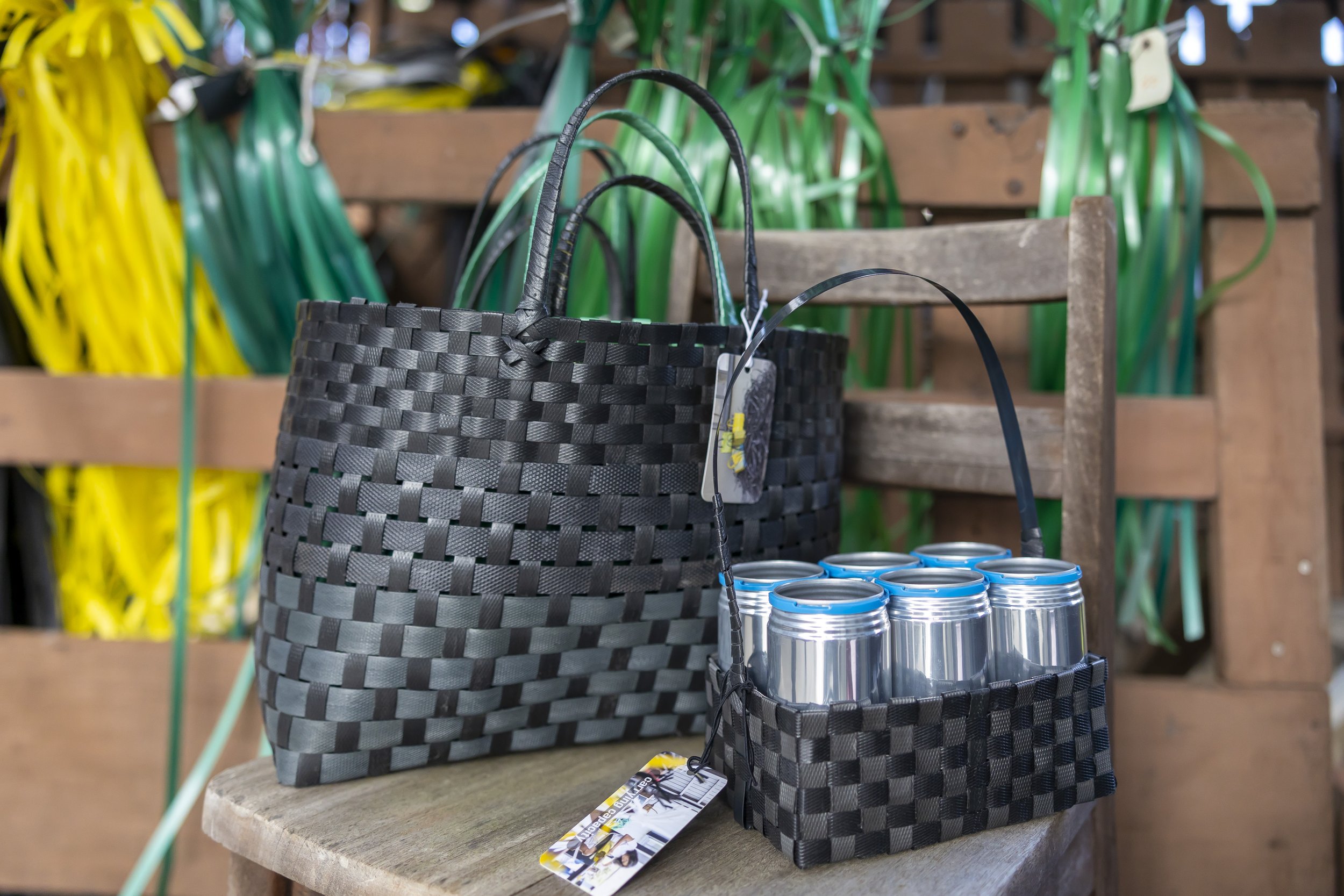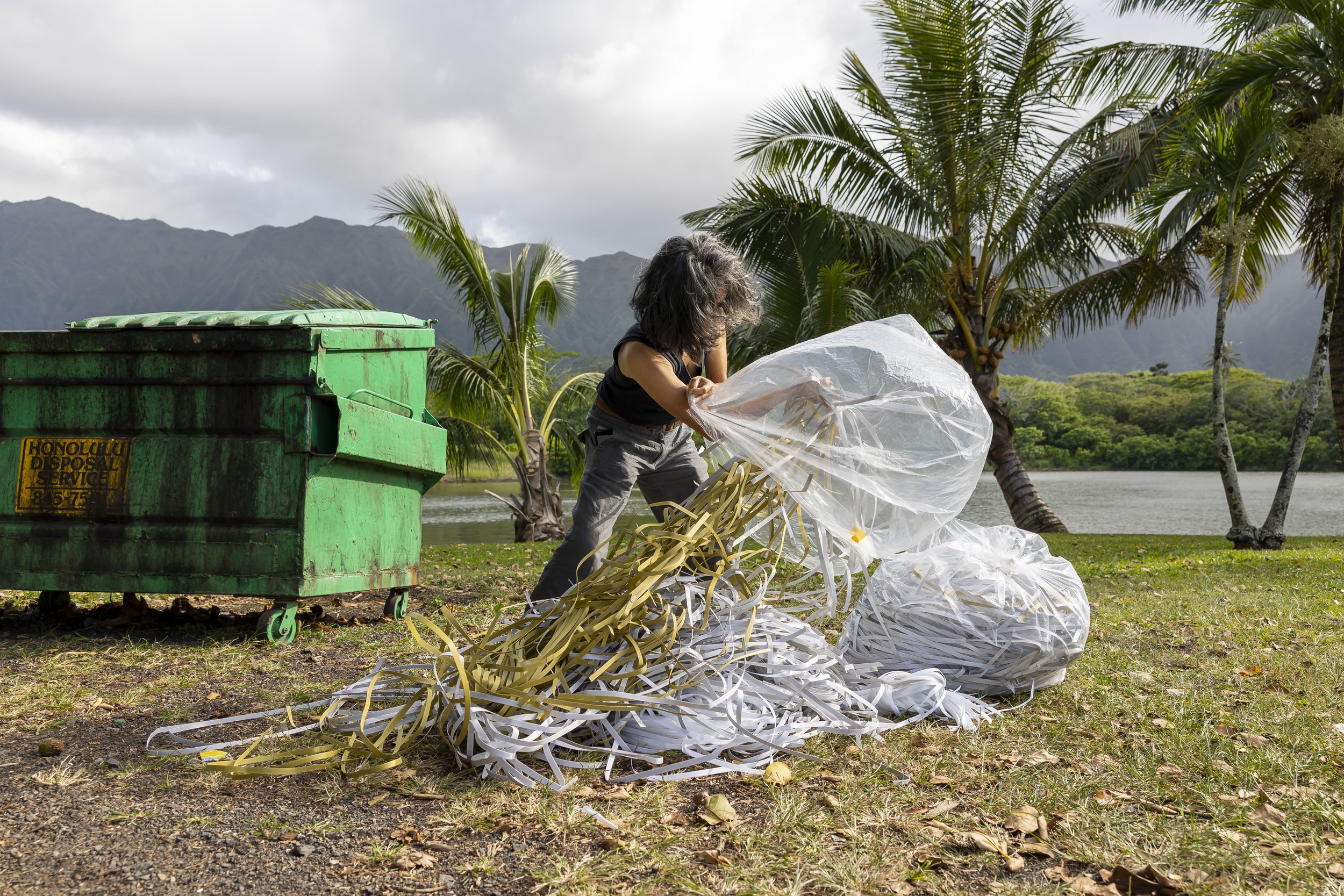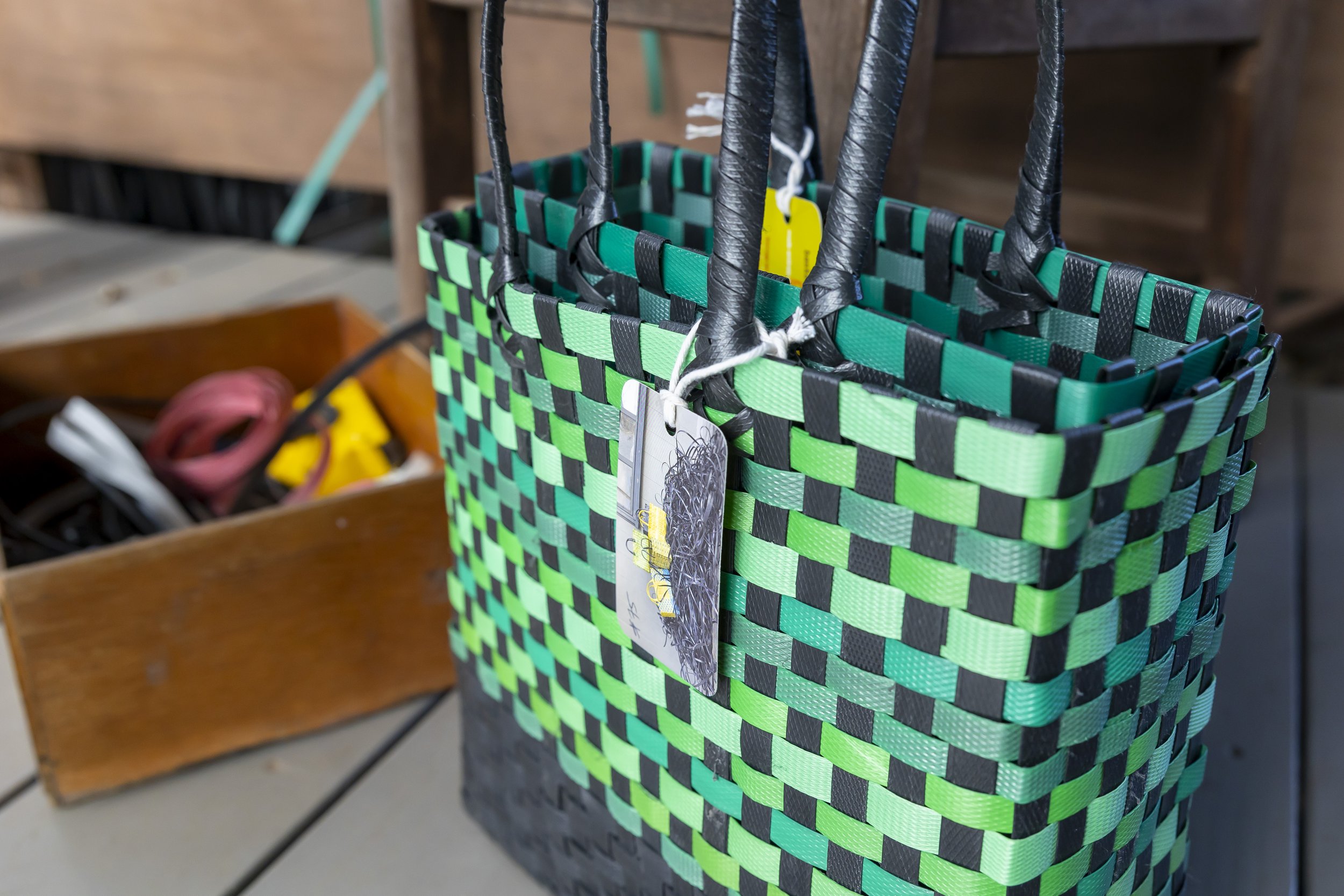A Maker's Movement





Gaye Chan has been creating since she was “a tiny, tiny person.” She’d watch her structural and civil engineer dad tinker with anything and everything he brought back from his construction sites.
“From a young age, I had the idea that anything could be material,” Chan says. “I never had the idea that you had to go to the store to buy material.”
So, it’s no surprise that her latest endeavor reinforces that she is indeed her father’s daughter. Her Carrying Capacity project features handmade baskets created with plastic baling straps destined for the dump. And, as an educator with University of Hawai‘i at Mānoa for 30 years — 13 of those as chairwoman of the art department — one of Chan’s goals has always been to zoom out a bit with her pieces and look at the larger picture, so to speak.
That foundation gives Carrying Capacity greater weight, speaking to a much larger global flow of materials that are single-use and mono-directional in nature. While the baskets she crafts are beautiful — colorful patterns and additional accessories like straps and buckles — as an artist, she’s more interested in the flow of materials.
In fact, she says, the plastic straps are also the most suitable material to look at capitalism and uneven labor markets. Intertwined in her baskets are issues of class, race, gender and sex, and the values placed on different kinds of work. It’s beauty that prompts a viewer or user to think a little more deeply.
“I made these explicitly so people can see what’s going on,” she explains.
Chan prices her baskets based on actual time of production, including gathering, cleaning, sorting and making — all determined by Bernie Sanders’ living wage. Compared to similar baskets from big-box stores, Chan’s are higher in cost, and that’s kind of the point.
“People are like, ‘Wow, it’s expensive,’ but I want them to think about that,” she says. “If I’m making more and selling it on consignment, how much are these other people making? Clearly, that worker is making like 50 cents. Part of the project is also thinking about that.
“Basketmaking is also a very denigrated form of craft,” she continues. “But it’s actually not that easy. That’s the other thing I hope people think about. I hope they try it and realize it’s hard. It gets us to think about why these people are paid so poorly if it’s not easy.”
The seeds for Carrying Capacity were planted nearly three decades ago during a casual walk around Chinatown in downtown Honolulu. Among vendors selling local produce and utilitarian and decorative wares, Chan stopped by the booth of a man selling plastic baskets. She bought two.
“I loved them; I had them forever,” she recalls.
Long after those initial receptacles, never did Chan think that they’d reappear in her life years later.
During a 2012 sabbatical in Vancouver with her partner, Chan was making her way to an organic food distribution company in the fall to get a case of overripe tomatoes to make sauce. At the facility, she saw a huge shipping crate filled with baling straps that are used to bind everything from boxes to papers to pallets.
“It occurred to me that it’s the same one the man made baskets with,” she says. As a creative trained in photography, Chan had never been educated as a weaver or fiber artist, but the artist in her couldn’t resist.
“I asked if I could have it, and they said I could take all of it since they were having trouble finding a recycler,” she says.
On sabbatical and with some time on her hands, it took Chan a week to make her first basket. She watched every type of basketmaking video she could and cobbled together her own methodology.
“It was shabby, but it was a basket and it held things,” she says, after a brief chuckle.
Prototype complete, she made a second one and brought it back to the organic food business. She proposed a trade: one basket a week using the company’s plastic trash in exchange for the produce it couldn’t sell to retail locations.
Thus kicked off her one-year barter project, and she catalogued each trade — a pie, photography services, pharmacy goods, produce and more — on her journey online at gayechan.com/barter.
Over the course of the last nine years, she’s made more than 1,000 baskets, each taking three to five hours to complete, depending on size, shape and complexity.
“I can’t stop,” Chan says. “If I didn’t do this, all of it would go in the trash. I realize I can’t do this by myself, and being an art educator, I thought I could lure people into my black hole.”
It’s why she began hosting workshops and demonstrations (and looks forward to relaunching them once COVID is under control), and in the meantime, she shares step-by-step DIY instructions by video and a PDF online at nomoola.com/baskets.
Though Chan has halted the bartering aspect for the time being, the spirit of Carrying Capacity continues with a live scheduled demonstration exhibit at Honolulu Museum of Art, slated for September to January. There, she’ll be using a 6-by-10-by-6-foot dog kennel’s worth of plastic straps — “Just for the sense of immensity,” she explains — to make bas- kets and kits throughout the showcase.
Further extending her reach, Chan also posts regular basket updates on Instagram (@foraged_in_entirety), where she invites collaborations and questions, and shares instructions and know-how with all those who are interested.
“My goal is to get them out of the waste streams,” says Chan of her material. “My obsession is to get more people to make these baskets.”
